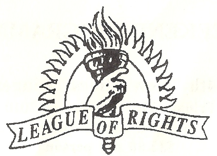The IOC's Pivot on Transgender Inclusion: A Science-Driven Safeguard for Fair Play to Women, By Mrs Vera West
It's a seismic shift for the Olympic movement: the International Olympic Committee (IOC) is poised to impose a blanket ban on transgender women competing in female events, effective ahead of the 2028 Los Angeles Games. Under new president Kirsty Coventry, who pledged during her June 2025 election to "protect the female category," the IOC has reversed its 2021 framework, which deferred eligibility to individual sports federations. This comes after a scientific review, presented by IOC Medical and Scientific Director Dr. Jane Thornton, affirmed that male-born advantages persist even post-testosterone suppression. The decision, still under deliberation but expected by mid-2026, also encompasses athletes with differences of sex development (DSD), like Paris 2024 boxers Imane Khelif and Lin Yu-ting, whose golds ignited global fury.
Critics decry it as exclusionary, but this post contends the ban is unequivocally correct. Rooted in irrefutable biology, it upholds the Olympics' bedrock: fair, merit-based competition. By prioritising evidence over ideology, the IOC safeguards Title IX-like equity for female athletes, averts safety risks, and honours the movement's inclusive ethos, without compromising the protected space women fought for since 1900.
At its core, the ban rests on physiology, not prejudice. Males, via testosterone surges during puberty, develop 10–50% advantages in strength, speed, and power, gaps that define sex-segregated sports. A 2021 British Journal of Sports Medicine study tracked transgender athletes pre- and post-hormone therapy: Transwomen's performance declined, but retained a 9–17% edge in push-ups, sit-ups, and running after 12 months of suppression, far exceeding medal-deciding margins (often <1%). Even after two years, hormone therapy erases only a fraction of the gap, per a 2021 review by the British Association of Sport and Exercise Sciences.
Thornton's IOC briefing echoed this: "Physical advantages to being born male... remained with athletes," including post-treatment. Longitudinal data from Joanna Harper's work shows muscle mass in transwomen lingers 10–30% above ciswomen's for 1–3 years, fuelling dominance in strength sports (e.g., weightlifting's 30% male WR edge). For DSD athletes like Khelif (46,XY chromosomes, elevated testosterone), advantages mirror: World Athletics' 2023 ban stemmed from studies showing 5–10% speed boosts in runners like Caster Semenya.
Counterclaims falter. A 2024 British Journal of Sports Medicine cross-section found no broad advantage, but critics note small samples (n=23) and non-elite focus; it ignored puberty's indelible skeletal (e.g., larger hearts, lungs) and biomechanical perks. As UW Medicine's Bradley Anawalt notes, science can't yet "resolve" debates, but the consensus, 13 studies showing retained edges, demands precaution. The IOC's "no evidence of advantage" threshold (pre-2021) inverted this: Exclusion until proven fair aligns with equity, not bias.
The Olympics aren't a social experiment; they're meritocracies where biology birthed categories in 1928 to level the field. Laurel Hubbard's 2021 Tokyo entry, first transwoman Olympian, sparked no podium, but Lia Thomas's 2022 NCAA swim titles (shattering records by seconds) did: She displaced ciswomen like Riley Gaines, who tied for fifth but lost the medal. Paris 2024's Khelif bout saw Italy's Angela Carini quit after 46 seconds, weeping over an "unfair" mismatch, echoing fears for non-elites.
Bans restore integrity: World Aquatics (2022), World Athletics (2023), and UCI Cycling (2023) adopted similar policies, citing the same data, no transwoman dominance ensued, but ciswomen's participation surged 15% in aquatics. Coventry's forward gaze, no retroactive changes, avoids chaos while signalling resolve. X reactions affirm: Elon Musk's sarcastic "mind-blowing discovery" (267K likes) and Gaines's call for medal strips captured viral consensus. Sharron Davies nailed it: "Males... in sports for females... simply cheating. Misogyny, unfair & often unsafe."
Contact sports amplify stakes: Transwomen's retained density risks injury, e.g., rugby studies show 20–30% higher tackle forces. World Rugby's 2020 ban prevented this, prioritising "player welfare." The IOC's blanket approach sidesteps federation patchwork, aligning with Trump's February 2025 executive order barring transwomen from U.S. women's sports (and threatening LA 2028 visas), averting diplomatic dust-ups.
Inclusion thrives via open categories: World Aquatics' 2023 "open" division welcomes all, fostering participation without erasure. Trans athletes like Quinn (Canada's 2021 soccer gold, trans non-binary in open women's team) prove paths exist. The ban isn't anti-trans; it's pro-fairness, echoing Semenya's DSD rechannelling to non-restricted events.
Dissenters invoke rights: Why deny transwomen's identity? Yet, as Anawalt posits, unresolved science tips toward exclusion until proven otherwise, mirroring doping bans. Small studies (e.g., 2022 PMC review) find no edge post-HRT but ignore elite contexts and confounders like training history. True inclusion weighs all athletes: Ciswomen, 50% of Olympians, deserve uncompromised equity.
The IOC's impending ban isn't retreat, it's renaissance. By heeding Thornton's evidence and Coventry's vision, it recommits to Olympism's ethos: "Higher, faster, stronger — together," but on equal terms. This decision — correct, courageous, and calibrated — ensures LA 2028 crowns champions, not controversies. As Musk quipped, some truths are "mind-blowing" only to the wilfully blind: Biology isn't bigotry. It's the fair play foundation women built, and all must defend.


Comments